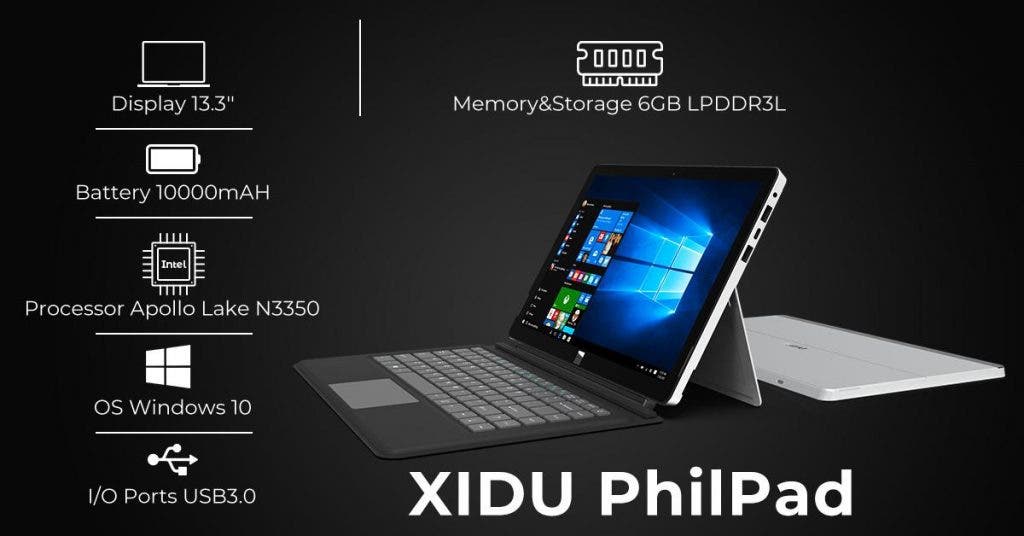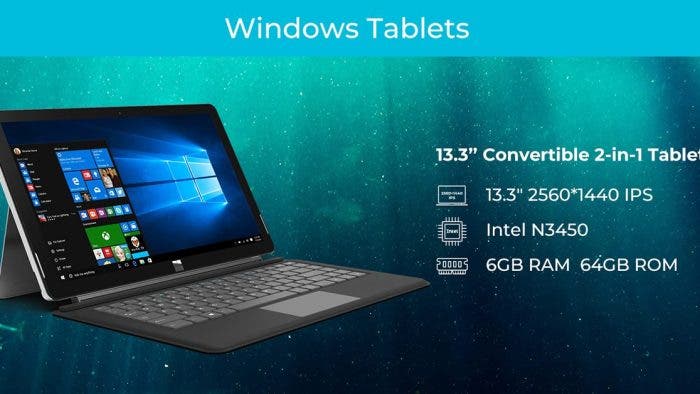XIDU PhilPad is a very interesting new affordable 2-in-1 convertible model that is making some waves on the market recently and the makers are putting out a little comparison today showing how it can stand to the much more common ASUS Vivobook. So let’s take a look at the differences between the models a bit.
XIDU 13.3″ PhilPad brings all-day battery life, a 2K (2560×1440) touchscreen display with IPS panel, and easily upgradeable storage, all for $369.99. If you don’t need the Bluetooth that the ASUS VivoBook offers, this should be your first pick.
Pros:
- 6GB RAM
- All-day battery life
- 2.4 GHz processor speed
- 2560 x 1440 Display Resolution
- Integrated Graphics
- Keyboard Input
- 2.75 lbs weight
- IPS panel display
Cons:
- Bluetooth selection lacking
- Processor cores – 2
ASUS 14″ VivoBook

ASUS VivoBook with the price of $ 550.68 has a Bluetooth selection. The 4GB RAM size will likely drive most people to the XIDU unless ports and network are a top priority
Pros:
- Pentium processor
- Bluetooth selection
- 14 in Full screen size
- Processor cores – 4
Cons:
- 4GB RAM
- 1.1 GHz Processor Speed
- 1920×1080 Display Resolution
- 2.87 lbs weight
These two laptops have different price, and they both have their perks and downsides. Let’s take a close look at exactly why you might want to opt for one or the other.
XIDU 13.3″ PhilPad vs. ASUS VivoBook tech specs

| XIDU PhilPad | ASUS VivoBook | |
| Operating System | Windows 10 | Windows 10 |
| Processor Series | Intel Celeron | Pentium |
| Processor (CPU) Manufacturer | Intel | Intel |
| Processor Speed | 2.4 GHz | 1.1 GHz |
| RAM | 6GB | 4GB |
| Graphics Coprocessor | Intel HD Graphics | Intel UHD Graphics 605 |
| Graphics Description | integrated | —— |
| Hard Disk Description | emmc | emmc |
| Hard-Drive Size | 64 GB | 64 GB |
| Wireless Compatibility | 802.11ac | 802.11ac, Bluetooth |
| Processor Count | 2 | 4 |
| Item Weight | 2.75 lbs | 2.87 lbs |
| Item Dimensions | 13.3 x 7.9 x 0.4 in | 9 x 20 x 3 in |
| Human-Interface Input | Keyboard, Touchscreen | Touchscreen |
| Display Resolution Maximum | 2560 x 1440 | 1920×1080 |
XIDU 13.3″ PhilPad vs. ASUS 14″ VivoBook Design
With 17mm-thickness and 2.75 lbs, XIDU’s PhiPad is slightly thinner and lighter than that of ASUS’s VivoBook. But it is undeniable that both are portable and can be hardly noticeable when packed into a laptop. Featured by metal silver shell, they all can provide better and clearer visual experience.
Both have a hinge design, and where the XIDU’s lid only opens to about 135 degrees, the ASUS’s lid reaches back far enough to lie flat. But PhilPad comes with two modes, laptop, and tablet mode respectively. Move the detachable keyboard, adjust it to tablet mode and watch your favorite TV series in your spare time. At work time, assemble the keyboard and enjoy the smooth and pleasant experience of PhilPad while you operate various software at the same time. Featured by ergonomic soft keyboard, it is comfortable to type on a compact device and the 135° Rotatable kickstand enables you to use it at various angles. Other than two modes for spare and work time, XIDU’s PhilPad is also equipped with a keyboard and pen which make it a perfect choice for your daily life and work (please prepare a AAAA battery for the Pen).
Although the ASUS easily wins with its Bluetooth selection, offering Intel 802.11b/g/n/ac (2×2), Wi-Fi and Bluetooth 4.1 Combo, 1 USB 3.1 Type-C, Gen 1 1 Micro USB 2.0, 1 Micro HDMI Headphone out/audio in combo jack. These ports make it easier to connect external accessories without a docking station or USB hub. While the XIDU’s 1 USB Type-C, 2 USB 3.0, 1 Microphone Jack, 1 MicroSD card slot, 2 Speakers, 1 Power button, 2 Volume +/-, 5MP Rear Camera, and 2MP Front camera are not inferior in any respect.
XIDU 13.3″ PhilPad vs. ASUS 14″ VivoBook Display
Budget laptops usually see a low-resolution display to help keep costs down, but these two laptops step up the screen with 2K (2560 x 1440) which shows clearer images than ASUS’s VivoBook (1920×1080). There is something in common, that is, the type of panel in use. Both XIDU’s PhilPad and ASUS’s VivoBook adopt the IPS screen which works well when viewed from the side and offers much wider viewing angles, making it easier to see for anyone who’s not directly in front of the screen.
Brightness is about the same in both laptops, and you might have some issues working in a well-lit room. As far as budget laptops go, both laptops deliver an above-average viewing experience, though the PhilPad 13.3“ does edge out the ASUS.
XIDU 13.3″ PhilPad vs. ASUS 14″ VivoBook performance
When picking out a laptop less than $500, it’s expected that performance won’t handle much more than lightweight productivity tasks, like word processing, web browsing, and video watching. The PhilPad’s Intel Quad-core Apollo Lake N3350 processor max up to 2.4GHz, which delivers 30% more processing and 45% better graphics performance on Windows versus previous-generation processors. Even heavy games can run smoothly and clearly on this laptop. What’s cooler is its four cores that can handle multitasking easier than the dual-core Intel CPU in the VivoBook. laptops Compared with 4GB RAM adopted by VivoBook that only can handle non-intensive work, the PhilPad has 6GB RAM, demonstrating fast and high-class experience. Will you notice a difference in performance? Likely not, but it’s still notable.
If you want to know more about XIDU products then you have to visit the official website and there are also bunch of discount coupons for their various models in here to snatch.






Okay guys now you’re pushing it to the limit in my opinion. Maybe this comment will be removed but I’ll try it anyway.
First of all Asus is a renowned brand with warranty, Xidu I am not sure of but I am sure that with my Asus I am able to go to a service point in my country which Xidu does not have. Nevertheless lets look at the other specs that you’re posting, since I’m not sure of which Vivobook 14′ you’re quoting and there is no link to the product I will just assume that you’re talking about the cheapest version ‘Asus VivoBook S14 S430UA-EB319T’. I’ll sum up what in my opinion is wrong with this article.
1. You’re comparing a processor of 2016 with a processor of 2018.
2. The Asus is not a pentium processor but an i3 processor (2.5x faster than the processor of Xidu).
3. The processor speed is 2.2 base and 3.4 Turbo. Since you’re talking about the turbo of the n3350 I think it is better to assume the turbo of the i3 for objective information, which is 3.4. Also this processor supports hyper-treading, which effectivly makes it have 4 cores (threads).
4. Graphics of Asus is Intel UHD Graphics 620 (So faster)
5. Ram is DDR3 (Xidu) vs DDR4 (Asus).
6. Graphics of Asus are also integrated.
7. Hard disk of Asus is SSD not emmc.
8. Heavy games will not run smooth on the Xidu. Please give me one heavy game (AAA game from the last 3 years) that can run the resolution of this screen on high settings.
9. Xidu has not four cores, it has two.
And most importantly :
So you can’t compare these two ! You simply can’t !!